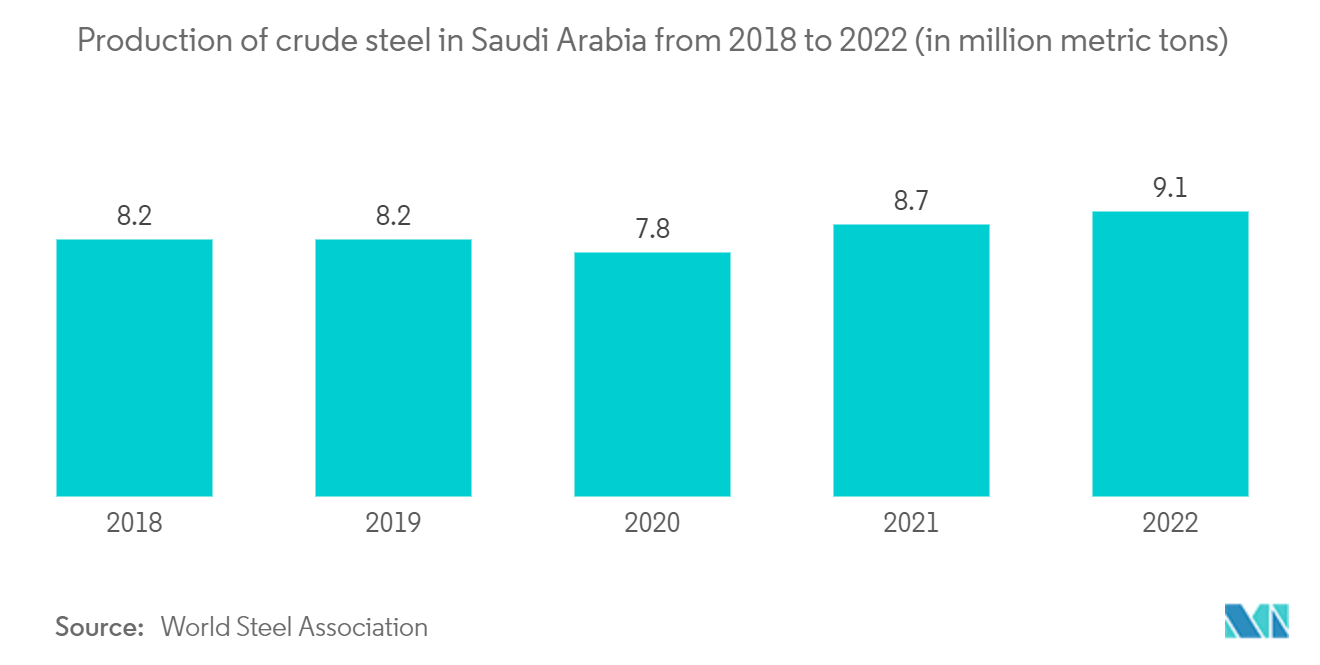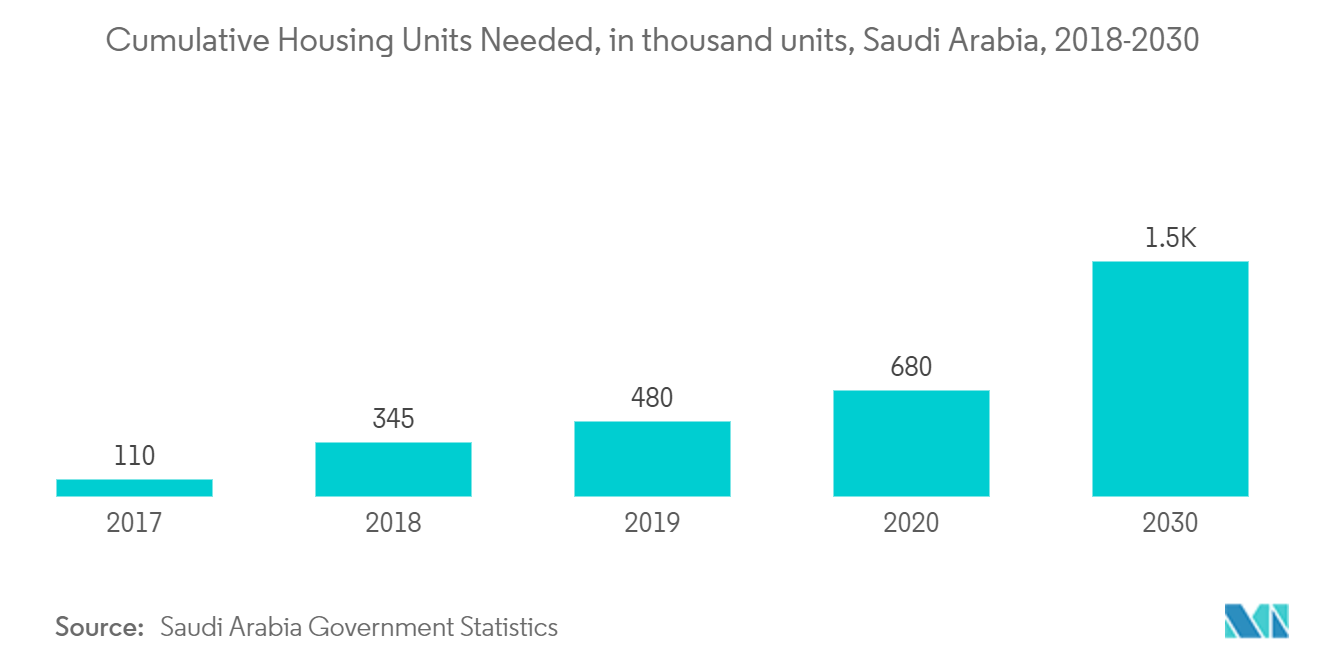Market Trends of Saudi Arabia Prefabricated Buildings Industry
Metal Holds the Major Share in Prefab Buildings Industry in Saudi Arabia
Metal is one of the most widely used construction materials across the country in both traditional and modern construction processes. Prefabricated metal structures are widely used in the construction of commercial buildings, skyscrapers, warehouses, and infrastructure developments in Saudi Arabia.
Companies, such as Zamil Steel, have been playing a major role in the prefabricated metal-building industry in Saudi Arabia over the past few years. Metal has been used as an alternative to concrete and other construction materials in the modern construction process owing to its high durability and reliability. Additionally, prefabricated metal buildings are estimated to save construction costs up to ~60% in the Middle East compared to traditional construction.
Structural steel as a metal is a highly important material utilized for framing structures in the building and construction industry. The prefabrication of steel bridges forms an important part of transportation infrastructure projects.
Prefabricated or pre-engineered steel buildings provide many advantages over other building materials, such as customization, speed of construction, decreased maintenance, and insurance costs. The components are created from steel at a manufacturing plant and delivered to the job site. Warehouses, retail spaces, event centers, and homes are ideal steel projects for prefabrication.
In the country, Neom (the Kingdom’s flagship project), the Red Sea Project, and Qiddiya (the capital of entertainment) are some of the key mega projects shaping the infrastructure and construction roadmap.
A rebound in project activity in Saudi Arabia, following the spread of COVID-19, boosted steel prices by over 6% in January 2022. From around SAR 3,558 (USD 948.8) in December 2021, the price of one ton of steel grew to nearly SAR 3,790 (USD 1,010.6) in January 2022. The increase in steel prices was due to an upturn in project activity, higher domestic demand, and an increase in steel exports. Moreover, there also has been a steady increase in the construction of private houses following the introduction of new mortgage facilities.

Governments' Investments and Plans in Residential Housing to Boost the Prefab Industry
Factors such as growing construction activities, demand for affordable housing, social change, and a need to support the population with access to more plentiful and better-quality accommodation are expected to drive the growth of the market in Saudi Arabia during the forecast period.
Additionally, the rising trend of providing housing facilities to migrant blue-collar laborers working on ongoing construction and industrial projects is also expected to boost the demand for prefabricated buildings during the forecast period. The unavailability of affordable housing, owing to population growth and an influx of expatriates, has encouraged the demand for prefabricated homes in Saudi Arabia. Rapid urbanization and upcoming infrastructural projects are projected to further provide a thrust to the market for prefabricated structures in Saudi Arabia during the forecast period.
According to the Saudi Arabian Housing Ministry, an estimated 1.5 million houses must be built by 2030 to address the housing shortage in the country. The government is taking significant steps in addressing the shortage of affordable housing revenues from the While Land Tax, which is expected to contribute toward the funding of affordable housing projects.
Similarly, the Ministry of Housing’s ‘ESKAN’ project aims to add 500,000 units to the total stock of the country’s affordable housing. King Salman has urged the Housing Ministry to build suitable and affordable housing for citizens, as it is a government priority. The government has issued legislation and has set aside a huge allocation in the budget for housing. The Ministry of Housing has planned several important housing schemes during the forecast period to build and support affordable housing, namely ETNAM and WAFI.
Population growth, urbanization, and tourism are expected to drive growth in the building sector, especially in the residential and leisure markets, further increasing the demand for prefabricated buildings in Saudi Arabia.


